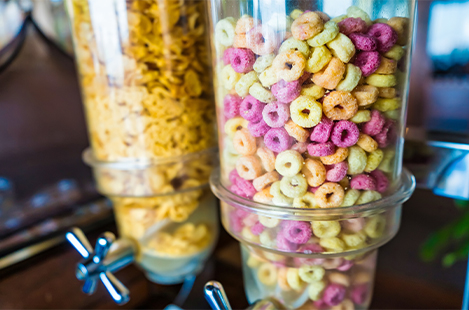
Girl dinner? Regular dinner? Breakfast, lunch, and dinner? Cereal is a ubiquitous and timeless treat that’s here to stay, and the industry continues to showcase innovation through colorful variations.
With a 93% reported consumption rate among U.S. shoppers, cereal is a favored household staple, due to its perceived affordability and easy-to-prepare nature.
Younger consumers are optimistic about increasing their cereal consumption, too, with 31% of Gen Z and 36% of Millennials expecting to eat more cereal in the next year (Mintel 2023).
43% of cereal consumers report eating cereal for more than just breakfast,
38% are snacking on cereal more often, and 50% eating it for breakfast more often (Mintel 2023).
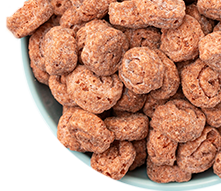
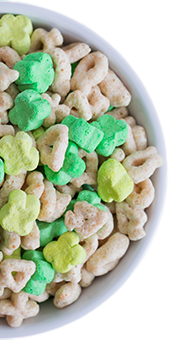
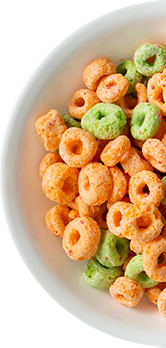
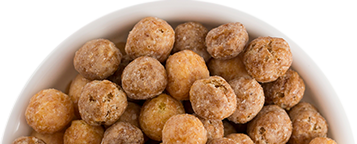
71% of US consumers say they like things that remind them of their past and more than 20% of consumers who expect to eat more cereal say they are motivated by nostalgia (Mintel 2023).
One of the best ways to elevate the experience of food is through color. Food and drink products need to look as good as they taste, and color can play a role in both the perception of health benefits and the flavor experience of cereals. Visual cues, such as vibrant colors, enhance the sensory appeal of food products and make them more attractive, especially to younger consumers who value the photogenic quality of their food for social media sharing.
A quarter of consumers consider natural ingredients to be an important purchasing factor for cereal (Mintel 2023).
When looking to make the switch to natural color in cereal, be sure to keep certain key considerations in mind.
Whether it’s extrusion-based, frosted with icings, or filled with marbits, cereal needs an expert take when natural color gets incorporated.
Not all colors can survive the harsh processing, but some are ideal for withstanding these conditions. To achieve the desired color, opt for heat-stable natural colors. Sensient has a portfolio of heat-stable colors across the rainbow, like Marine Blue™ or Uberbeet™.

Many natural colors require a higher ratio of product in order for the color to remain vivid. Sensient offers solutions like highly concentrated Suprared™ that gives the right hue without overdosing and compromising on texture or flavor. Other colors like Paprika or Radish can contain off-notes, so Sensient offers Pure-S™ technology to mitigate any issues.

Colors like caramel, Red 3, and titanium dioxide are coming under question. Sensient’s Sienna™ and Avalanche™ portfolios are perfect solutions for brands that want to get ahead of any necessary changes.


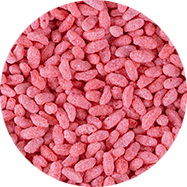
For cereal, heat-stable natural color options in red or pink are radish and beet. Sensient offers unique technology and strong natural colors that help these colors survive and increase pigmentation at lower usage rates than the typical beet or radish.
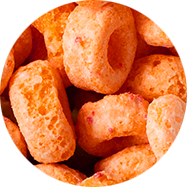
Paprika, annatto, turmeric and beta carotene are excellent choices for achieving a range of orange and yellow shades. If solubility is a concern, Sensient offers our proprietary AET™ technology for oil-soluble colors in any product.

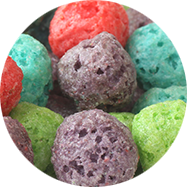
In cereal, greens can be achieved through the right combination of natural blues and yellows. Sensient offers the world’s most heat-stable spirulina in our Marine Blue™ portfolio, and well as our novel color source Butterfly Pea Flower Extract for bright purples.

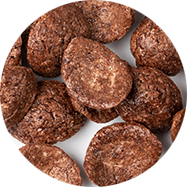
For cocoa replacers or shades that are Prop 65 compliant, Sensient’s Sienna™ solutions offer natural browns that can work in a wide range of cereal applications.

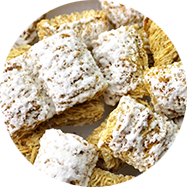
If titanium dioxide is a color to avoid, our Avalanche™ color range can provide the necessary whitening agents in any cereal ingredients including frostings.

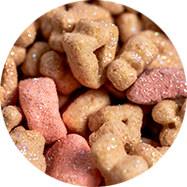
Because cereal is experiential (and fun!) food, there are many options to upgrade the appearance of cereals or cereal toppings with our inclusions. Try Sensipearl™ for a shimmery surprise or Spectraflecks™ for added bursts of color and flavor.